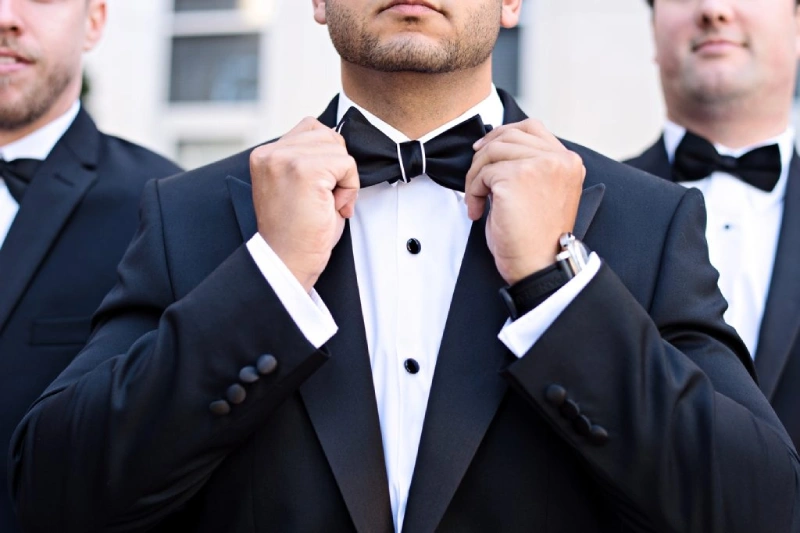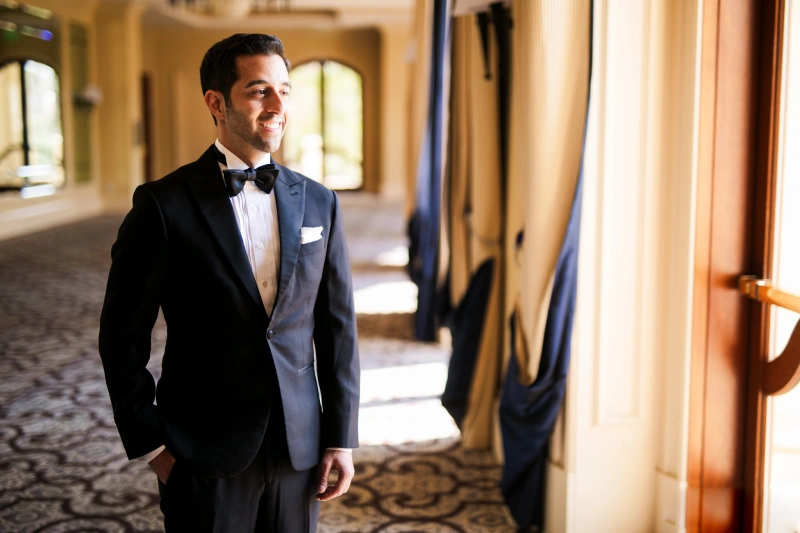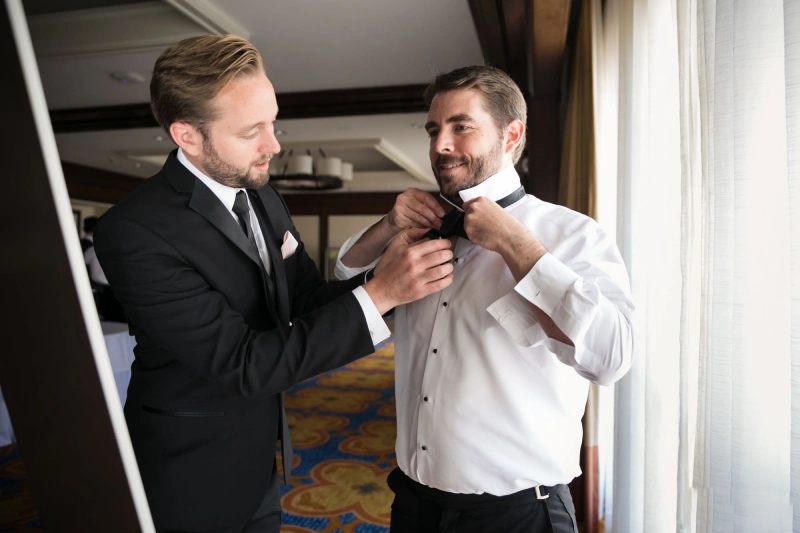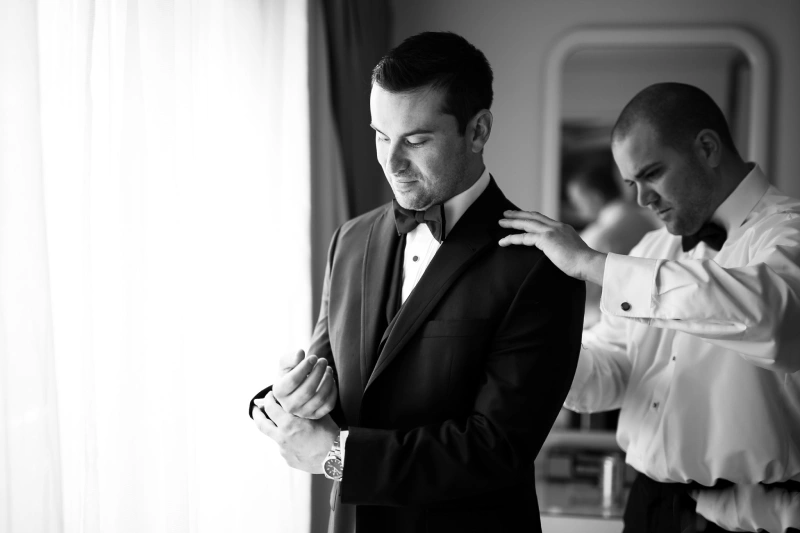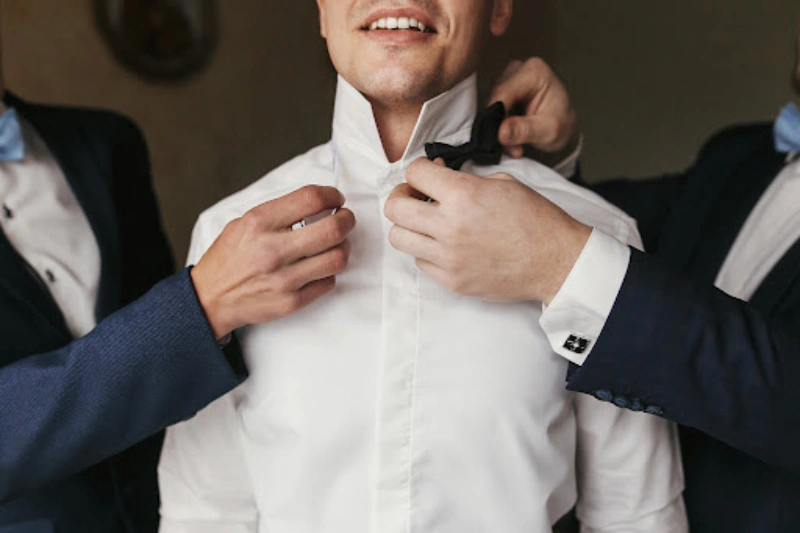The Persian groom stands at the crossroads of tradition and modernity, embodying a rich tapestry of culture that can transform nuptial celebrations into unforgettable experiences. Whether you’re preparing for a grand wedding or an intimate gathering, styling the Persian groom is an art that balances timeless elegance with contemporary flair. From the intricate details of traditional attire to innovative styling choices that reflect personal taste, every element plays a vital role in crafting the perfect look. This article delves into the essential aspects of grooming, fashion, and presentation, guiding you through the diverse styles—from classic Persian designs that honor centuries-old customs to cutting-edge trends that resonate with today’s sensibilities. Join us as we explore how to elevate the Persian groom’s look, ensuring he shines brightly on his special day while honoring his roots with pride.
The Evolution of Persian Grooming Styles
The history of Persian grooming styles is a rich tapestry woven through centuries of cultural evolution, from the ancient Achaemenid Empire to contemporary Iran. Traditionally, Persian men have taken great pride in their appearance, with grooming practices deeply rooted in their cultural identity. The Persian groom, in particular, has always been seen as a symbol of elegance and grace, playing a pivotal role in the grandeur of wedding ceremonies. The meticulous attention to detail in grooming reflects not just personal pride but also respect for the cultural heritage.
In ancient Persia, grooming was an intricate practice that involved the use of natural oils, perfumes, and elaborate hairstyles. Persian men were known for their well-maintained beards, which were often styled in elaborate curls and treated with fragrant oils. The traditional attire, which included the long, flowing robes known as ‘kandys’ and ‘caftans,’ was designed to reflect the wearer’s status and wealth. These garments were often adorned with intricate embroidery and gold or silver thread, showcasing the craftsmanship and artistry of Persian culture.
As Persia evolved, so did its grooming styles. The influence of different dynasties, including the Safavids and Qajars, introduced new elements to Persian grooming. The Safavid era, for example, brought with it a renewed emphasis on opulence and luxury, with grooms donning lavish garments made from silk and velvet. The Qajar period saw the introduction of more European influences, with Persian men adopting Western-style suits while still maintaining traditional elements like the ‘kolah’ (a type of hat) and ornate sashes. This blend of traditional and contemporary styles set the stage for the diverse grooming practices seen in modern Persian weddings.
Classic Persian Attire: Key Elements and Significance
Classic Persian attire for grooms is steeped in historical and cultural significance, each element telling a story of tradition and heritage. The quintessential Persian groom’s outfit often includes a long, flowing garment known as a ‘jameh’ or ‘aba.’ These garments are typically made from luxurious fabrics such as silk, brocade, and velvet, reflecting the importance of the occasion and the groom’s status. The intricate embroidery and embellishments on these garments are not merely decorative but serve to honor centuries-old craftsmanship and artistry.
One of the most iconic pieces of classic Persian attire is the ‘sharwal,’ a type of wide-legged trouser that is both comfortable and elegant. These trousers are usually paired with a ‘pirahan,’ a long tunic that can be adorned with intricate patterns and designs. The combination of the sharwal and pirahan creates a timeless silhouette that is both regal and graceful. The tunic is often belted with an ornate sash, adding an extra layer of sophistication to the ensemble.
Accessories play a crucial role in completing the classic Persian groom’s look. A traditional hat, such as the ‘kolah,’ adds an air of nobility, while a beautifully crafted ‘abayeh’ (cloak) can be draped over the shoulders. Footwear is equally important, with traditional leather shoes or ‘giveh’ (woven slippers) adding the final touch. Each of these elements is chosen with care, not only to enhance the groom’s appearance but also to honor the rich cultural history that defines Persian weddings.
Contemporary Trends in Persian Grooming
In recent years, contemporary trends in Persian grooming have seen a fascinating blend of modern fashion with traditional elements, creating a unique and stylish look for the modern Persian groom. Today’s grooms are more adventurous, willing to experiment with different styles and incorporate international trends while still paying homage to their cultural heritage. This fusion of old and new has led to innovative grooming practices that are both sophisticated and personalized.
One of the most notable contemporary trends is the incorporation of Western-style suits into Persian wedding attire. While classic elements like the pirahan and sharwal remain popular, many grooms opt for tailored suits that offer a sleek and modern silhouette. These suits are often made from high-quality fabrics such as fine wool or silk blends and are tailored to perfection, ensuring a sharp and polished look. However, these modern suits are frequently paired with traditional accessories like the kolah or an ornate sash, creating a harmonious blend of styles.
Another trend that has gained popularity is the use of bold and vibrant colors in the groom’s attire. While classic Persian outfits often feature rich, deep hues like burgundy, navy, and emerald, contemporary grooms are experimenting with brighter shades and unique color combinations. This trend allows grooms to express their personal style and make a bold statement on their special day. Fabrics are also evolving, with modern grooms opting for innovative textures and patterns that add a contemporary flair to traditional garments.
Grooming practices have also seen a modern twist, with grooms paying meticulous attention to their hairstyles and facial hair. While the well-maintained beard remains a staple, contemporary styles often incorporate modern haircuts and grooming products to achieve a polished look. The use of high-quality grooming products, such as beard oils, hair pomades, and skincare routines, ensures that the modern Persian groom looks his best from head to toe. This combination of traditional elegance and contemporary style creates a striking and memorable look for today’s Persian groom.
Accessories That Define the Persian Groom’s Look
Accessories are the finishing touches that elevate the Persian groom’s look from ordinary to extraordinary. These carefully chosen items not only complement the groom’s attire but also carry cultural and symbolic significance. Each accessory is a testament to the rich heritage and meticulous craftsmanship that define Persian weddings, adding depth and character to the groom’s ensemble.
One of the most iconic accessories for the Persian groom is the ‘kolah,’ a traditional hat that symbolizes nobility and elegance. The kolah comes in various styles, from the tall, cylindrical ‘kolah namadi’ to the shorter, more modern versions. These hats are often made from high-quality materials such as felt or wool and can be adorned with intricate embroidery or embellishments. Wearing a kolah adds a touch of regal sophistication to the groom’s outfit, making it a quintessential accessory in Persian wedding attire.
Another important accessory is the sash or belt, known as the ‘shawl.’ This ornate piece is usually made from luxurious fabrics like silk or brocade and is intricately woven with traditional patterns and designs. The sash is worn around the waist, adding structure and elegance to the groom’s attire. In some cases, the sash may also feature tassels or fringes, adding an extra layer of detail and craftsmanship. The shawl not only enhances the groom’s appearance but also serves as a symbol of strength and authority.
Footwear is another crucial aspect of the Persian groom’s look. Traditional leather shoes or ‘giveh’ are popular choices, each offering a blend of comfort and style. These shoes are often handmade, showcasing the artistry and skill of Persian craftsmen. The giveh, in particular, is known for its lightweight and breathable design, making it an excellent choice for outdoor weddings. The combination of traditional footwear with modern attire creates a harmonious blend of styles, ensuring the groom looks polished and sophisticated from head to toe.
The Role of Color and Fabric in Persian Grooming
Color and fabric play pivotal roles in defining the elegance and significance of Persian grooming. The choice of colors in a groom’s attire is not merely an aesthetic decision but is deeply rooted in symbolism and tradition. Rich, vibrant colors such as deep reds, emerald greens, and royal blues are often favored, each carrying its own cultural significance. Red, for example, symbolizes love and joy, making it a popular choice for wedding attire. Green represents growth and prosperity, while blue is associated with tranquility and wisdom. These colors are meticulously chosen to reflect the joyous and auspicious nature of the wedding celebration.
The fabrics used in Persian grooming are equally significant, with a strong emphasis on quality and craftsmanship. Luxurious materials such as silk, brocade, and velvet are commonly used, each offering a distinct texture and drape that enhances the overall look. Silk, with its natural sheen and softness, adds an element of opulence and sophistication. Brocade, known for its rich patterns and raised designs, brings depth and intricacy to the attire. Velvet, with its plush texture, provides a regal and majestic appearance. The careful selection of these fabrics ensures that the groom’s outfit not only looks stunning but also feels comfortable and luxurious.
In contemporary Persian grooming, there is a growing trend of experimenting with unconventional colors and fabrics. Modern grooms are increasingly open to exploring unique color palettes, such as pastels, metallics, and even bold prints. This willingness to experiment allows for a more personalized and innovative approach to wedding attire. Additionally, modern fabrics such as lightweight wool, linen, and blended materials are being incorporated, offering a balance between tradition and contemporary style. These fabrics provide versatility and comfort, making them ideal for different wedding settings and seasons. The thoughtful combination of color and fabric creates a harmonious and visually striking look that celebrates both heritage and modernity.
Grooming Rituals: Traditional Practices and Modern Adaptations
Grooming rituals have always been an integral part of Persian weddings, with traditional practices that have been passed down through generations. These rituals are not just about physical appearance but also about preparing the groom mentally and spiritually for the significant journey ahead. One of the most important traditional practices is the ‘Hammam’ ritual, where the groom visits a public bathhouse for a thorough cleansing and purification process. This ritual often includes a steam bath, body scrubbing with a ‘kese’ (exfoliating mitt), and a massage with aromatic oils. The Hammam ritual is a symbolic act of purification, ensuring the groom is refreshed and rejuvenated for his wedding day.
In addition to the Hammam ritual, other traditional grooming practices include the use of natural oils and perfumes. Persian men have long been known for their love of fragrances, with essential oils such as rose, jasmine, and sandalwood playing a significant role in their grooming routines. These oils not only add a pleasant scent but also have therapeutic properties that help calm the mind and body. The application of these oils is considered an art, with specific techniques used to ensure the fragrance lasts throughout the day.
Modern adaptations of these traditional grooming rituals have seen the incorporation of contemporary grooming products and techniques. Today’s Persian grooms have access to a wide range of high-quality grooming products, from beard oils and hair pomades to skincare and grooming kits. The use of modern grooming tools such as electric shavers and trimmers has also made grooming more efficient and precise. Many grooms now opt for professional grooming services, visiting barbershops and salons for haircuts, shaves, and facials. These modern practices ensure that the groom looks his best while still honoring the traditional rituals that have been part of Persian culture for centuries.
Tips for Choosing the Perfect Outfit for Your Wedding
Choosing the perfect outfit for your wedding is one of the most important decisions a groom will make, as it sets the tone for the entire celebration. When selecting your attire, it is essential to consider both tradition and personal style, ensuring that your outfit reflects your cultural heritage while also showcasing your individuality. Here are some tips to help you make the right choice.
Firstly, consider the theme and setting of your wedding. Whether you are having a grand celebration in a luxurious venue or an intimate gathering in a garden, your outfit should complement the overall ambiance. For a traditional Persian wedding, classic attire such as the pirahan and sharwal paired with a kolah and sash would be fitting. For a more modern setting, a tailored suit with traditional accessories can create a stylish and contemporary look. The key is to ensure that your outfit harmonizes with the wedding theme and location.
Secondly, pay attention to the fit and comfort of your attire. A well-fitted outfit not only looks better but also allows you to move comfortably throughout the day. Consider having your garments custom-made or tailored to ensure a perfect fit. When choosing fabrics, opt for high-quality materials that are breathable and comfortable, especially if you have an outdoor wedding or plan to dance the night away. The combination of a well-fitted outfit and comfortable fabrics will ensure you look and feel your best.
Lastly, don’t forget the details. Accessories such as the kolah, sash, shoes, and jewelry play a crucial role in completing your look. Choose accessories that complement your outfit and add a touch of elegance and sophistication. Pay attention to grooming details such as your hairstyle and facial hair, ensuring they are well-maintained and styled to perfection. By considering these tips and paying attention to the finer details, you can create a memorable and stylish look that honors both tradition and modernity.
Cultural Significance of Grooming in Persian Weddings
Grooming holds profound cultural significance in Persian weddings, symbolizing not just physical preparation but also spiritual and emotional readiness for the journey ahead. The meticulous attention to grooming reflects the values of elegance, respect, and reverence for tradition that are central to Persian culture. Each grooming practice and attire choice is imbued with symbolic meaning, making the groom’s preparation a deeply meaningful ritual.
The Hammam ritual, for instance, is more than just a cleansing process; it is a symbolic act of purification that prepares the groom for the sacred union of marriage. This ritual signifies the shedding of the old self and the emergence of a purified and rejuvenated individual ready to embark on a new chapter of life. The use of natural oils and fragrances in grooming further enhances this sense of renewal, providing both physical and emotional well-being.
The attire chosen for the wedding day also carries deep cultural significance. Traditional garments such as the pirahan and sharwal, adorned with intricate embroidery and embellishments, are not just about aesthetics but also about honoring the craftsmanship and artistry that define Persian culture. The colors and fabrics used in the attire symbolize various virtues and blessings, adding layers of meaning to the groom’s outfit. The kolah, sash, and other accessories further enhance this symbolism, representing nobility, strength, and elegance.
Grooming in Persian weddings is also a way of honoring familial and communal ties. The preparation process often involves family members and close friends, creating a sense of unity and support. This communal aspect of grooming highlights the importance of relationships and the collective effort that goes into celebrating the union of two individuals. By embracing these traditional grooming practices and understanding their cultural significance, the Persian groom pays homage to his heritage while preparing himself for the joyous and significant journey of marriage.
Conclusion: Blending Tradition with Modernity in Grooming
Styling the Persian groom is an art that beautifully blends tradition with modernity, creating a look that is both timeless and contemporary. From the historical significance of classic Persian attire to the innovative trends that define modern grooming, each element plays a vital role in crafting the perfect look for the groom. The evolution of Persian grooming styles reflects the rich cultural heritage and the dynamic nature of contemporary fashion, allowing grooms to celebrate their roots while expressing their individuality.
The key to achieving the perfect balance lies in understanding the cultural significance of traditional grooming practices and incorporating modern elements that enhance and personalize the look. Whether it’s the classic elegance of the pirahan and sharwal, the regal sophistication of the kolah and sash, or the contemporary flair of a tailored suit, each choice is a reflection of the groom’s heritage and personal style. The thoughtful selection of colors, fabrics, and accessories further enhances the groom’s appearance, creating a harmonious and visually striking ensemble.
Grooming rituals, both traditional and modern, play a crucial role in preparing the groom for his special day. These practices not only ensure that the groom looks his best but also provide a sense of renewal and readiness for the significant journey ahead. By embracing these rituals and understanding their deeper meaning, the groom can honor his cultural heritage while embracing contemporary trends.
In conclusion, styling the Persian groom is about more than just appearance; it is about celebrating a rich cultural heritage and creating a memorable and meaningful experience. By blending tradition with modernity, the Persian groom can shine brightly on his special day, honoring his roots with pride and stepping into the future with confidence and style.

